Unboxing: MSI Force Pro Wireless – A Promising Entry into the Pro Controller World
With the Force Pro Wireless Controller, MSI introduces a gamepad aimed squarely at ambitious gamers – whether on Xbox or PC. The unboxing quickly makes one thing clear: this isn’t just another Xbox-compatible controller. Quite the opposite – the included accessories, build quality, and first tactile impressions suggest this controller is ready to compete with the big names.

Packaging & First Impressions
The packaging instantly feels premium. The design is modern and clean without being cluttered. The front features a large image of the controller, the RGB logo, and MSI’s signature dragon emblem – a clear message: this is built for gaming. The „Designed for Xbox“ badge is also prominently placed. Overall, the packaging is confident – and rightly so.
The back lists the main features:
- Hall effect triggers
- Modular design with interchangeable thumbsticks and D-pads
- Additional back buttons
- Anti-slip coating
- Up to 48 hours of battery life
- Connection via USB-C, Bluetooth, or 2.4 GHz dongle
In short: on paper, this controller offers everything you’d expect from a modern pro-level device – and even a bit more.
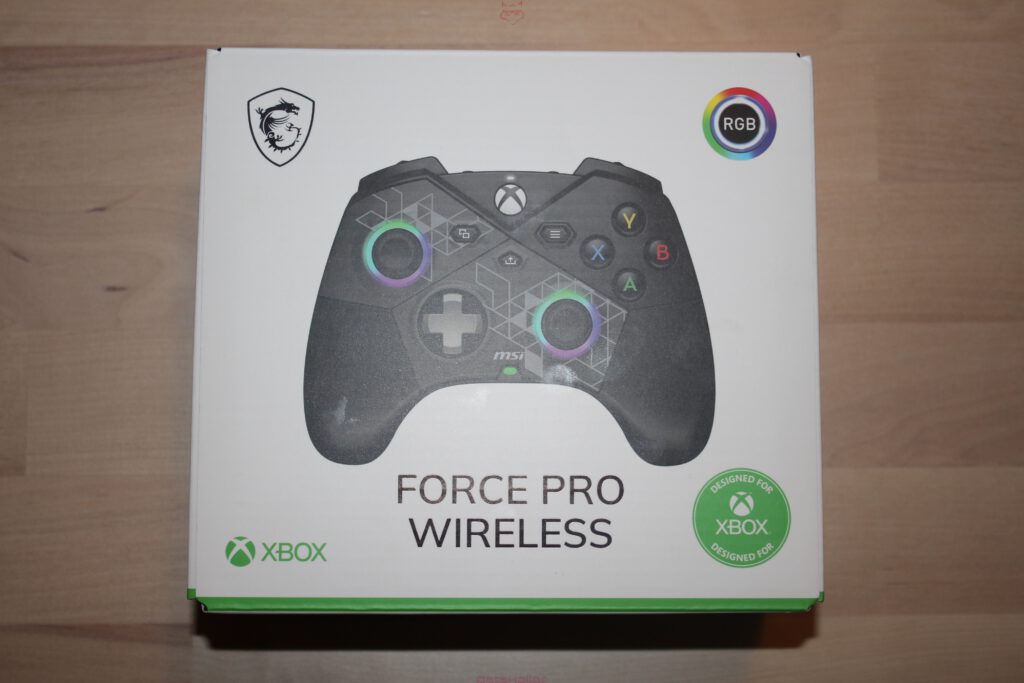
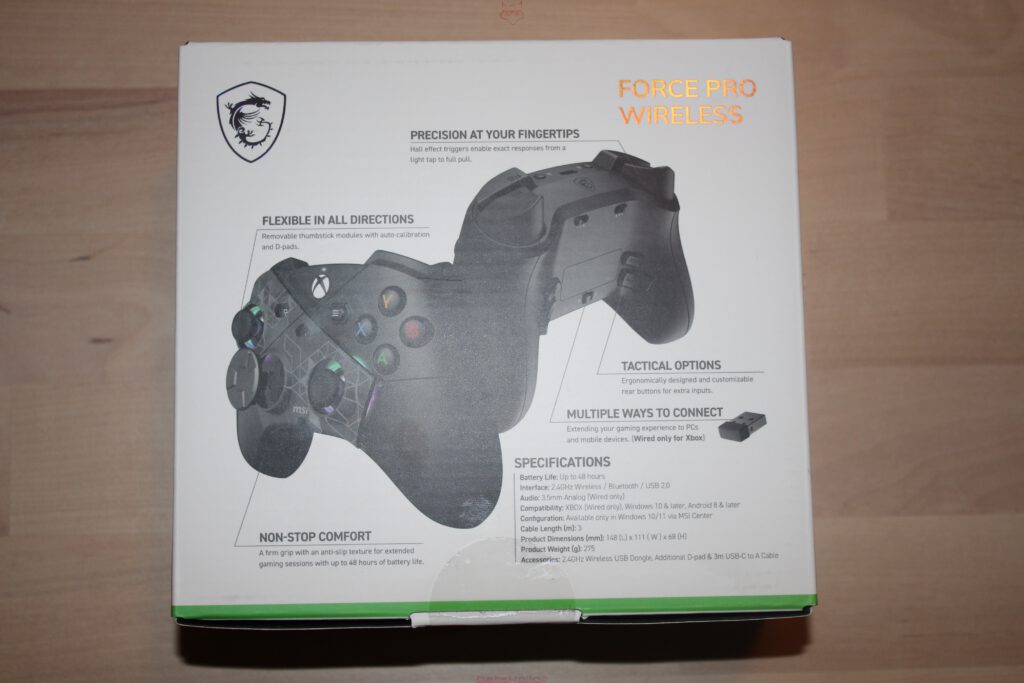
What’s in the Box
Open the box and you’re greeted with a neatly arranged interior. The controller sits securely in a plastic shell, with a small compartment for accessories. Here’s what’s included:
- MSI Force Pro Wireless Controller
- 2.4 GHz wireless USB dongle
- USB-C to USB-A cable (approx. 3 meters, braided)
- Second D-pad module (classic vs. disc style)
- Quick start guide & warranty info

The cable feels flexible and well-made – definitely not a throwaway. The dongle is compact and seems durable. A big plus: MSI avoids excess packaging waste. Everything has its place, nothing is rattling around loose.
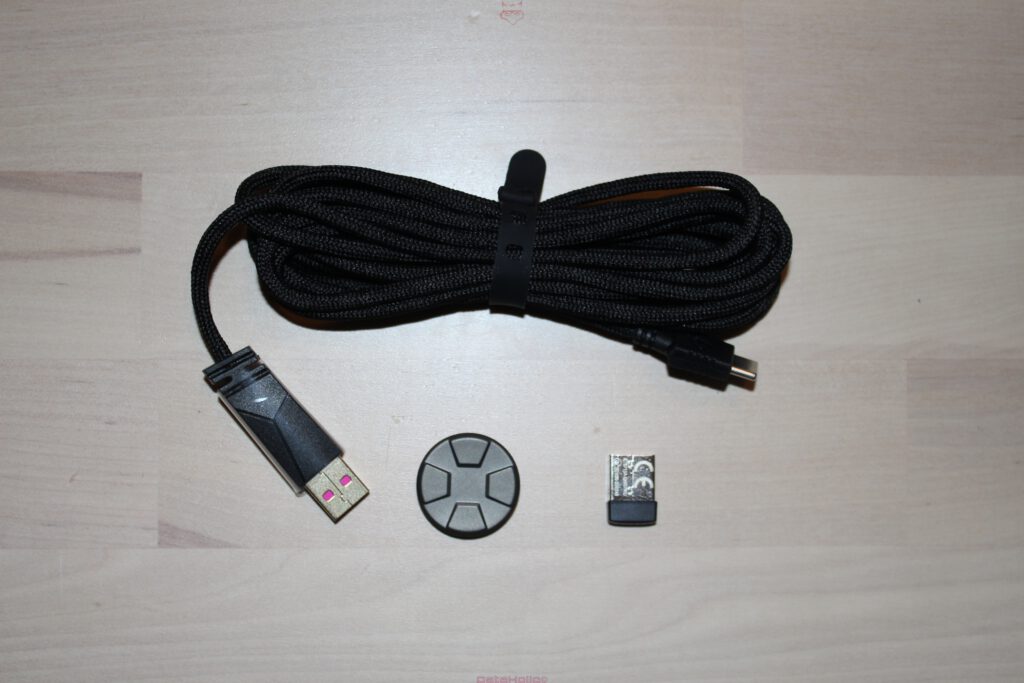
First Hands-On: Design & Build Quality
Right out of the box, the controller feels great in hand. The shell feels solid, no creaking or gaps – this is top-tier craftsmanship. The surface is slightly rubberized, and the back features a textured anti-slip coating. Grip should stay strong even during longer sessions.
Design-wise, the Force Pro takes clear inspiration from the Xbox layout but adds its own twist. A subtle geometric pattern on the front sets it apart visually. The RGB rings around the thumbsticks add a splash of color – more for show than function, but it works.
The front houses the usual ABXY buttons, an Xbox-style home button, menu and view buttons, two thumbsticks, and a modular D-pad. On the back, you’ll find four extra programmable buttons – a welcome addition for shooters, MMOs, or complex control setups.
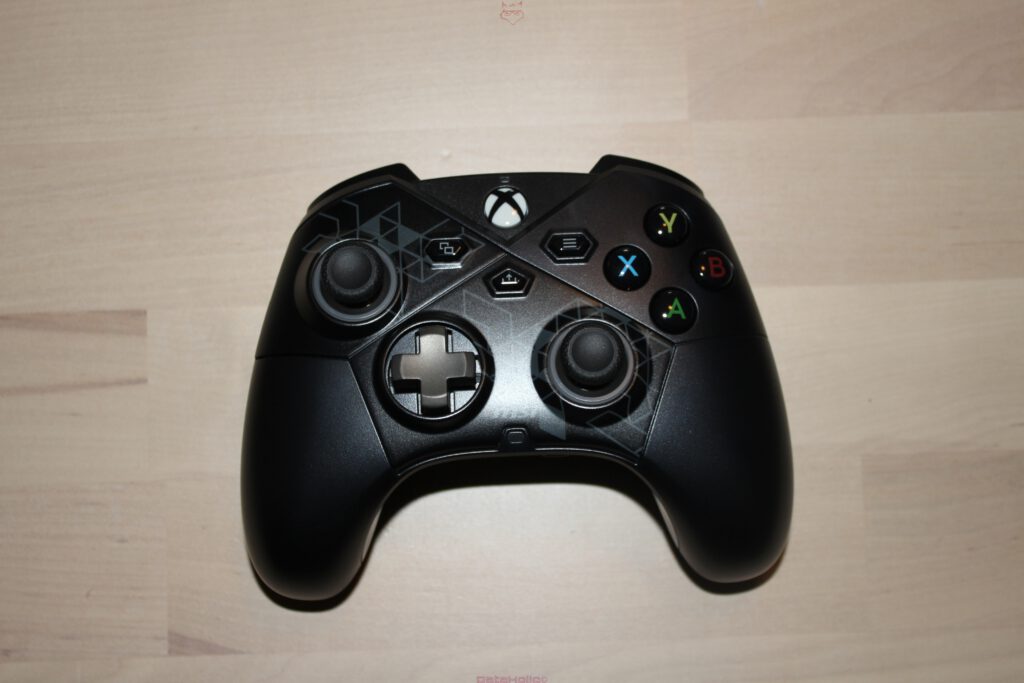
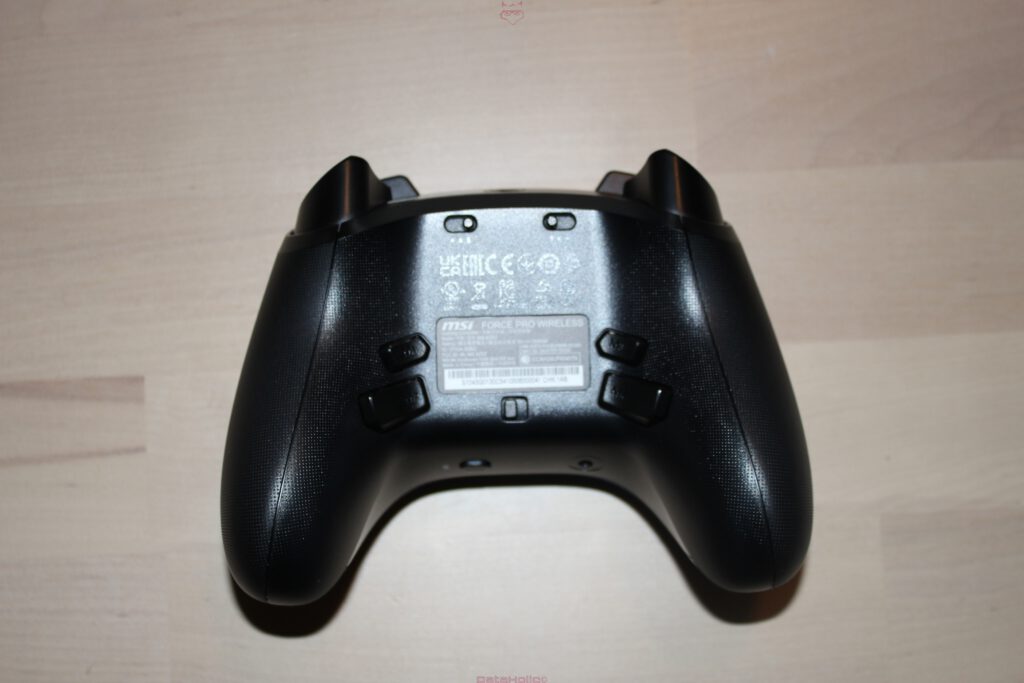
Modularity: Quick to Swap, Built to Last
One standout feature is the swappable D-pad module. MSI includes two versions – a classic cross and a round disc. Swapping is easy thanks to a magnetic system. Both sit firmly in place, no wobble, and can be changed without tools. That’s smart and useful, especially since different game genres benefit from different layouts.
According to the packaging, the thumbsticks are also interchangeable and self-calibrating. Clearly, MSI is aiming for longevity and customization – a direction usually seen in controllers north of €150.
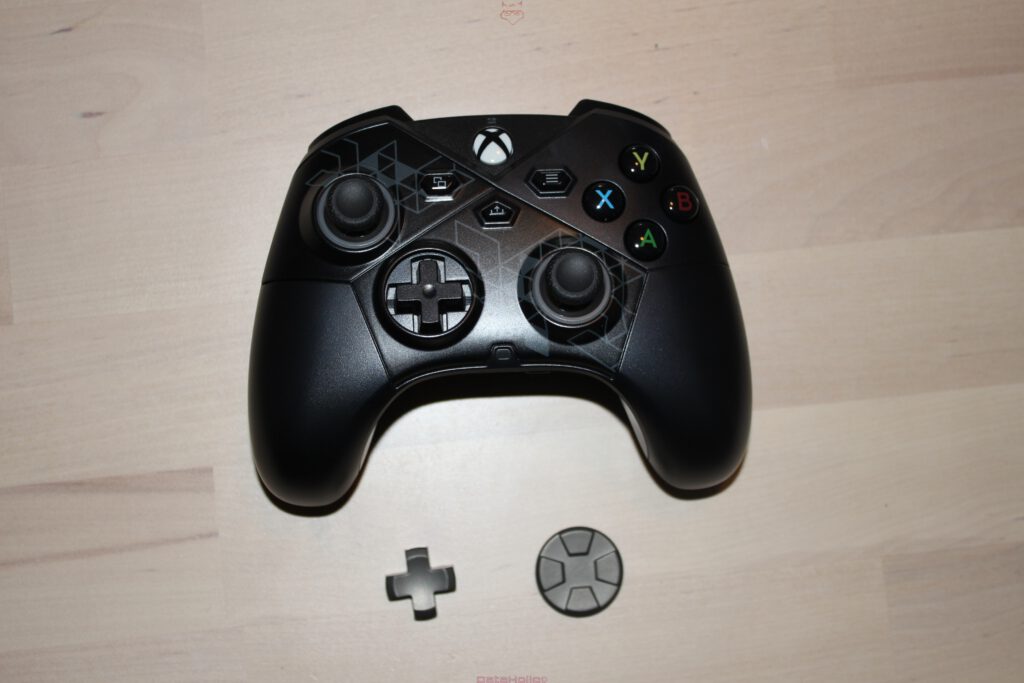
Ports & Connectivity
You’ve got three connection options:
- Bluetooth
- 2.4 GHz wireless via dongle
- USB-C cable (for PC and Xbox)
Important: the controller only works wired on Xbox consoles. Wireless connections are reserved for PC, Android, and other supported devices. Good to know before you buy – a bit of a downside for Xbox-only users, but technically understandable.
At the bottom is a standard 3.5mm headset jack – essential for many players, especially in multiplayer. It’s well-integrated and cleanly built.
Triggers & Buttons: Hall Effect Over Standard Mechanisms
MSI highlights the use of Hall effect triggers – a technology that relies on magnetic fields instead of mechanical contacts. The advantage: no wear and tear, more precise control, and longer lifespan. In initial tests, the triggers feel very smooth and responsive, with good resistance and a clean actuation point.
The other buttons (ABXY, shoulder buttons, thumbsticks) also leave a solid impression. Clicks are quiet and satisfying, with quick and accurate response. The four back buttons have a tactile, crisp feel and are easy to reach with your middle fingers.
Battery & Runtime
According to MSI, the battery lasts up to 48 hours – a value that will naturally vary depending on RGB use and connection type, but still sounds promising. Charging is done via USB-C, and the included cable is long enough to use the controller while charging.
Whether this holds up in practice will be tested over time, but on paper, MSI is right up there with the established competition.
RGB: Subtle, but Present
The RGB lighting is limited to the rings around the thumbsticks. Colors can be adjusted via software (which will be covered in part two of the review). If you prefer a more minimal look, you’ll likely be able to turn the lighting off entirely – which is great, since RGB should be an optional flair, not a distraction.
When turned off, the controller still looks sleek and clean, despite the RGB accents. If you’re into more eye-catching gear, this controller has the potential to stand out.
Unboxing Verdict: Solid Start with Lots of Potential
Even at this early stage, the MSI Force Pro Wireless doesn’t feel like a half-hearted attempt to enter the controller market. MSI has put together a well-thought-out product with high build quality, smart features, and a clear ambition to go head-to-head with the likes of the Xbox Elite Controller or Scuf – likely at a significantly more attractive price.
The modular D-pad, Hall effect triggers, long battery life, and extra back buttons all leave a strong first impression. Of course, the real test is still ahead: how does it hold up in everyday use? How good is the software? And how durable is the build after several weeks of play? These questions will be answered in parts two and three of the review.
Transparency Note:
Thank you to MSI for providing the Force Pro Wireless and for their trust. This article was published voluntarily and without any contractual obligation. MSI had no influence on the content, structure, or evaluation of the article. All impressions and assessments are entirely our own.
